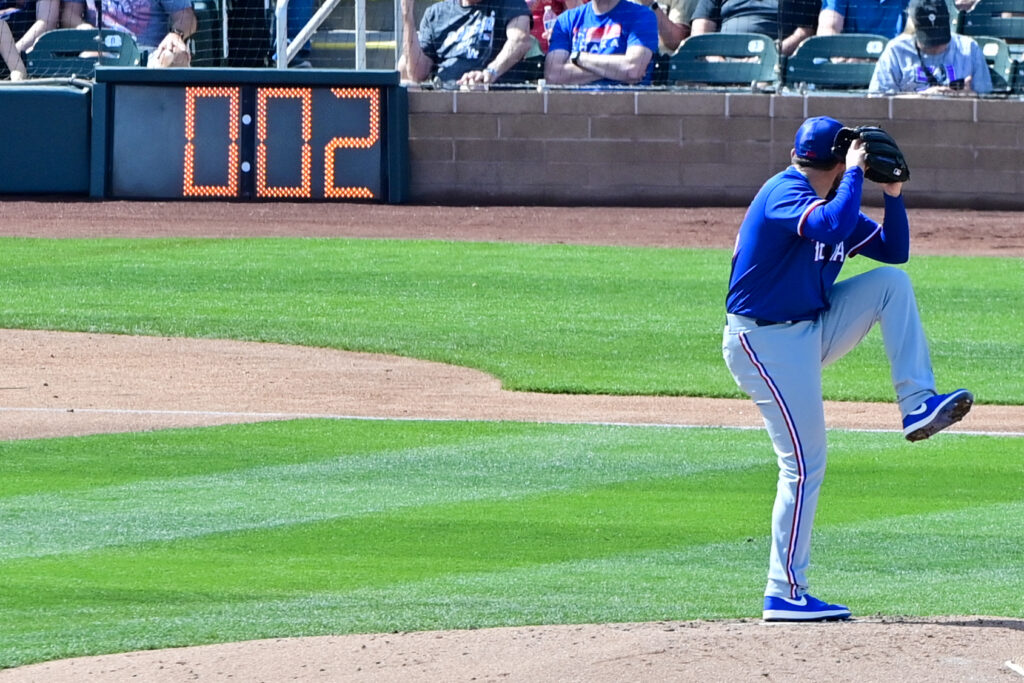MLB seems to be infatuated with making new rules, many of which are meaningless. The three-batter minimum rule has got to go. There is nothing about it that improves the game of baseball at all. And the most ridiculous thing is that no one thought of modifying it to allow for a designated legal amount of pre-three-batter pitching changes (probably something like two), or if they did, it at least never became a serious consideration.
The three-batter minimum rule is not the only one. Multiple new rules have been added that are just plain baloney. But not all new, even unconventional ideas are bad. Below, we will look at a few ideas for new rules that might actually be good for the game.
A Look Into 4 Good Ideas for New Rules
1. The Courtesy Runner Rule
Each team has the option of designating one player as the courtesy runner at the start of every game. This player will run for another specific player in the lineup any time he reaches base, only running for that particular player and no one else. He is ineligible from that point to participate in the game in any other capacity.
The exception is extra innings, in which the courtesy runner may run for the automatic runner on second if the manager chooses. The decision, however, must be made at the start of the extra inning, and the courtesy runner cannot be inserted for the automatic runner after a pitch is thrown or a play is attempted.
If the courtesy runner is used to run for the automatic runner, he cannot subsequently run for the player in the lineup that he was originally running for if such player reaches base later in the inning. In each subsequent extra inning, the manager is free to decide whether the courtesy runner will run for the automatic runner or his original hitter.
The courtesy runner may not be substituted at any time in the game. The exception is injury, upon which a bench player (or pitcher, if any are fast enough) may replace him in that role, provided he has not played in the game and will not do so in any capacity other than running. No provision is made for the occasion of the ejection of the courtesy runner.
Idea Behind This Rule
There are slow runners in baseball, with catchers often leading the list. Not only would this give teams a new way of utilizing speed, but it would also create new opportunities for players whose speed is one of their primary positive attributes. The most extreme example is Terrance Gore, but others stand to benefit as well.
The new rule may be good simply because of the interest it would give to fans if it was adopted, although this might wear off eventually.
2. The Mercy Rule
If one team is leading by at least ten runs at the end of six innings, or five and a half if the home team is ahead, the leading team will be declared the winner. This rule also applies if a 15-run lead is reached at the end of four.
Idea Behind This Rule
The mercy rule would prevent players, especially pitchers, from expending their energy and taking the ever-present moderate risk of injury in a game that has already been decided.
However, there is a significant con here, in that teams use low-leverage situations to get work in for pitchers, especially pitchers that aren’t finished with their development. A modification could be made to require the consent of the losing team, or at least to raise the minimum lead requirement to invoke the rule for cases in which such invoking would be against the wishes of the losing team.
3. The Continuous Batting Order Rule
This rule will seem the strangest of all to the average reader. For each team’s first three or four games of every regular season, they will use a continuous batting order, which means that instead of having nine hitters in the lineup, everyone will start and take a turn to hit. They must take turns playing defense and sitting on the bench while the other team is up to bat.
Idea Behind This Rule
This would give managers an immediate opportunity to evaluate all position players on their team (although the number of at-bats per starter would be diminished from what it typically is with a batting nine). Also, prospects who need to see action to stay in shape would not be restricted to the bench. Teams might be more likely to put a top prospect on the opening day roster since they’ll know that he will see at-bats at least in the season’s first few games.
Whether this rule should be optional or mandatory is an open question, and there would be a case for both. Certainly, we don’t want MLB exercising too much control over how managers run their teams. And yet it might be good to see this as the new norm. It would add something quite interesting to baseball.
4. The 30-Man Active Roster for the Month of April
The 2020 season opened with 30 players for every team. Since players had to jump into things with a short “spring” training after having been cold for so long during the COVID outbreak, MLB wanted to ease into things a bit. Pitchers in particular were incapable of handling their normal workloads.
This created an opportunity for players who otherwise would have been in the minors, though such an opportunity was certainly also due to a large number of opt-outs, whether because of COVID apprehension or dislike of the season’s terms.
Idea Behind This Rule
So what’s the idea now? Everyone can (hopefully) handle their workloads just fine at this point. But the key idea here is opportunity creation. A ton of people want to play Major League Baseball, but for only a select few does it become a reality.
Note that this rule would NOT coexist well will the previous one mentioned about a continuous batting order. I’m not saying all these rules should be adopted together. They are merely individual ideas.
Conclusion
MLB’s focus right now is on making pointless new rules that do nothing to improve the game. Pitch clocks and pick-off limits are unconscionable. (If the FIP statistic is bad as it is, who knows how we’ll be evaluating pitchers if these rules significantly alter their performances?) But when we think rationally and reasonably, we can come up with new rules that might actually be good.
Some of the ideas mentioned are actual rules used at lower levels. It is fun to think of how they might play out if adopted in the MLB.




I do like the courtesy runner suggestion…